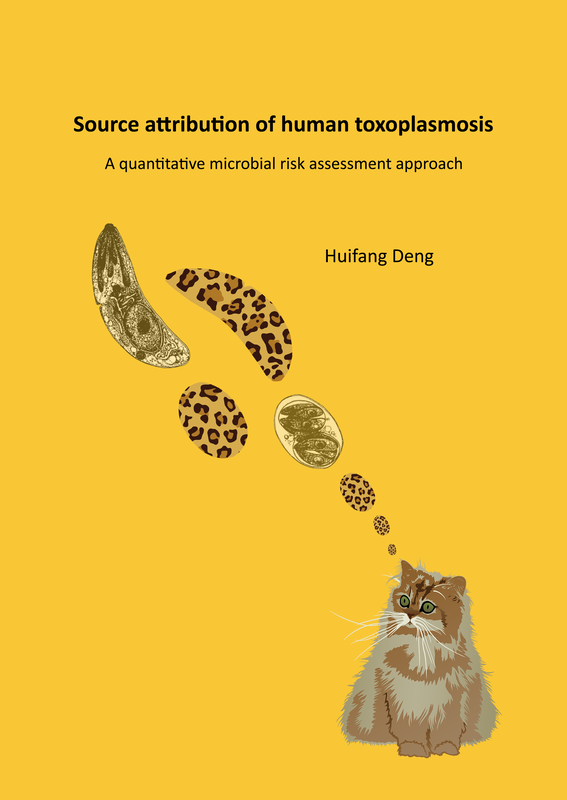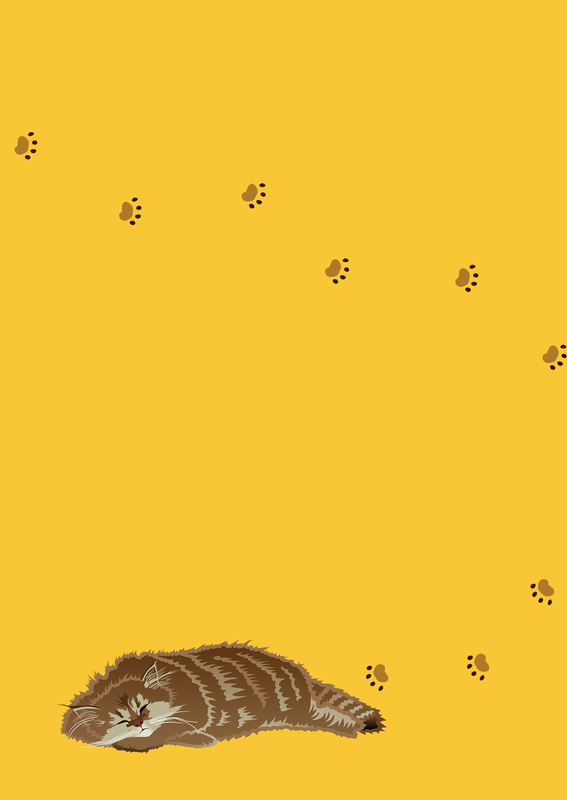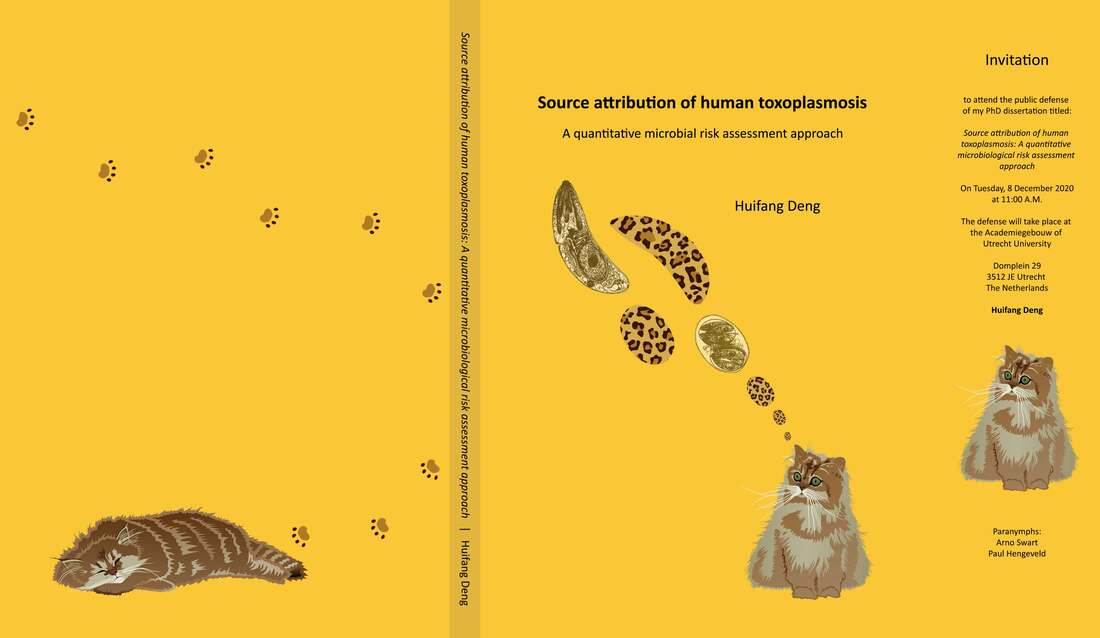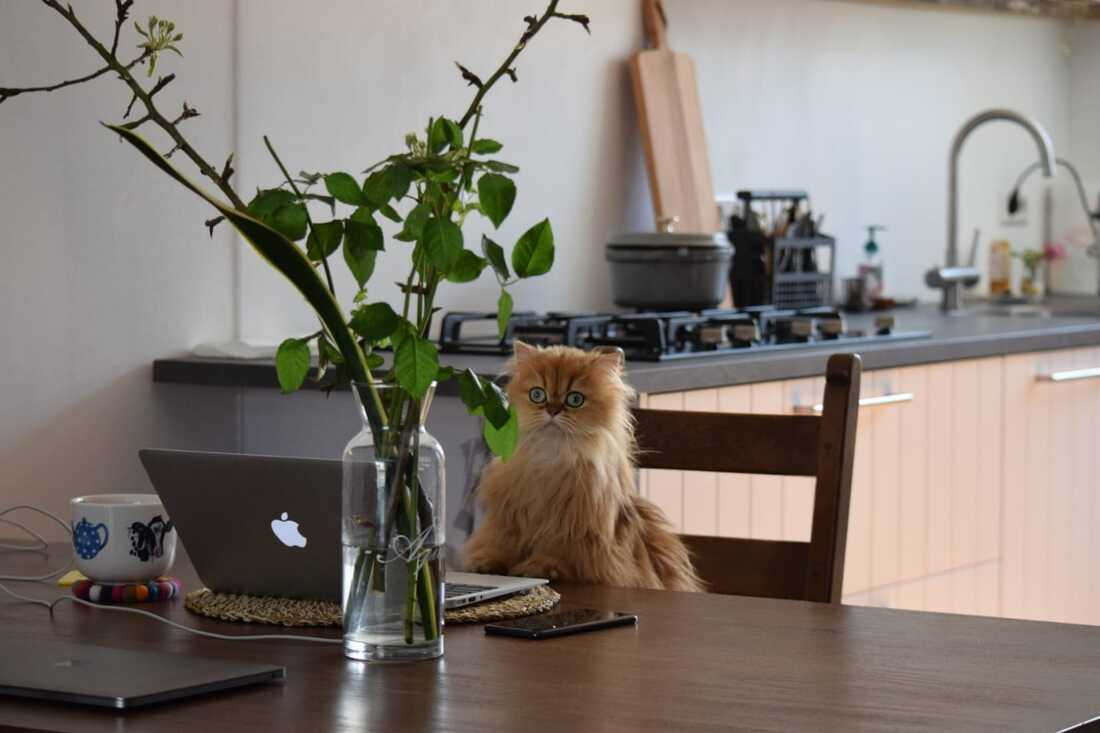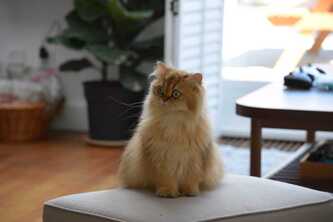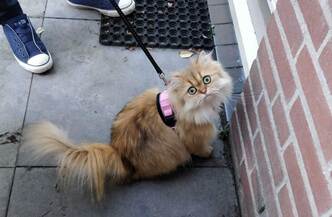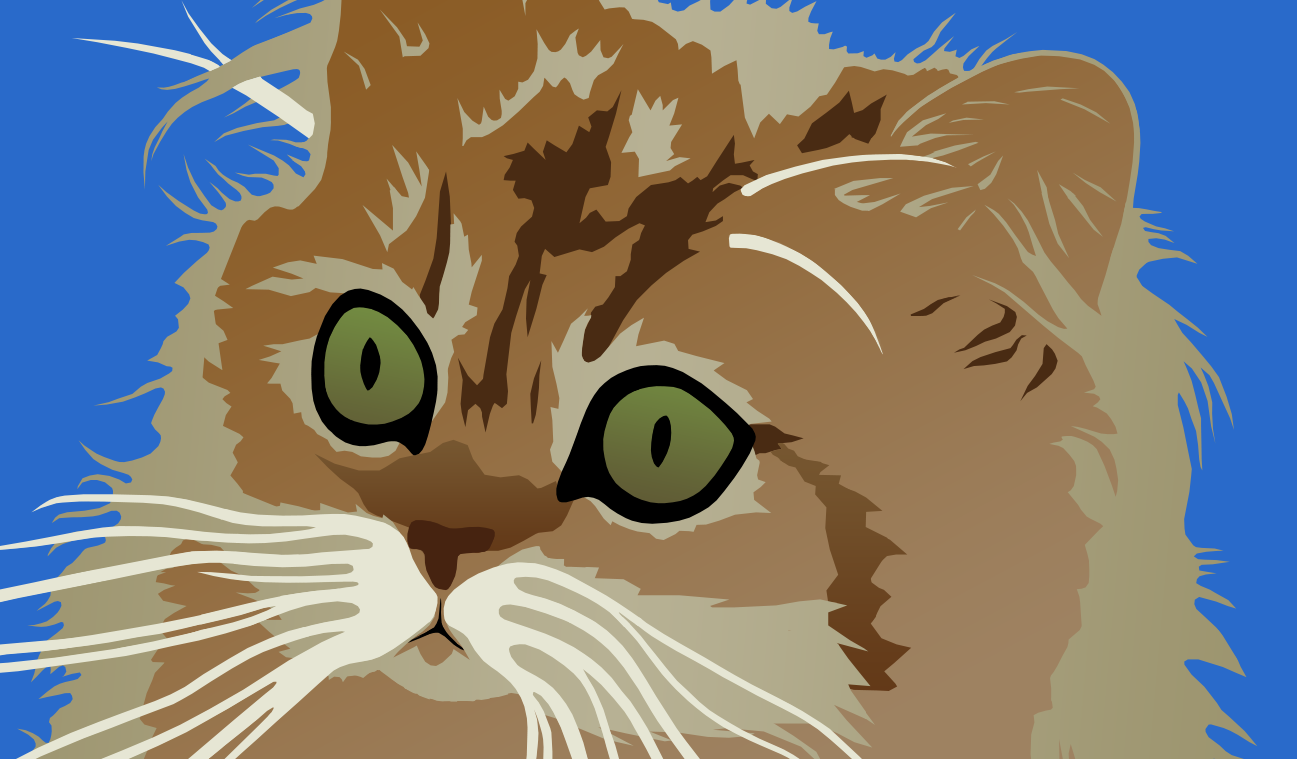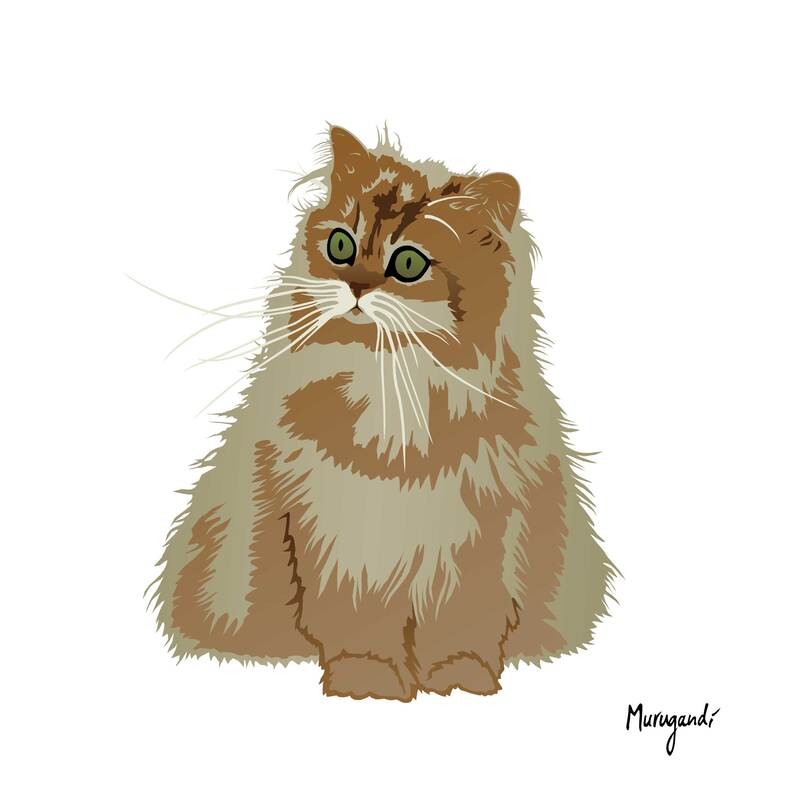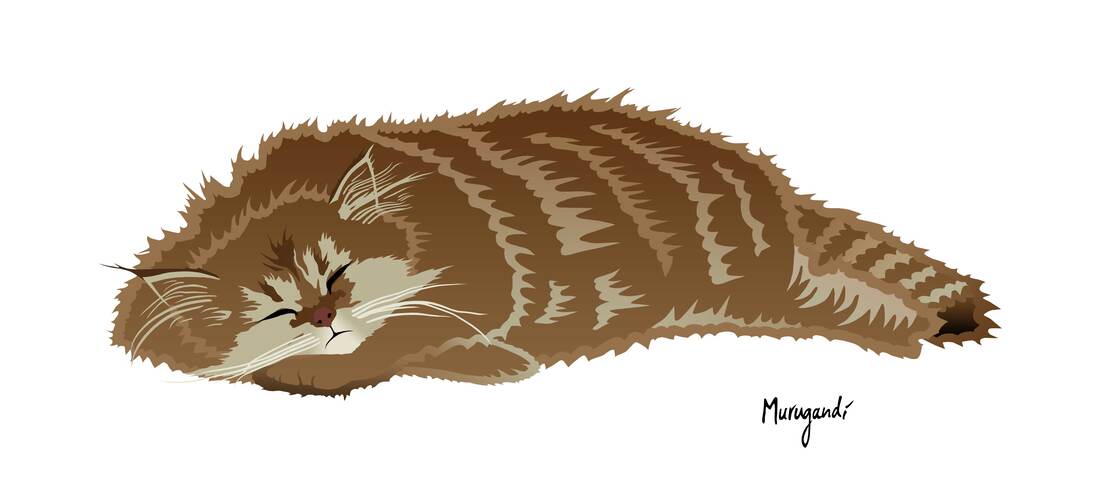|
I am always grateful when friends and acquaintances reach out to me for art commissions. This time I was approached by my friend Tim van Vliet and his wife Huifang "Jenny" Deng (邓慧芳). Jenny asked me to design a cover for her PhD thesis, titled Source attribution of human toxoplasmosis - A quantative microbial risk assessment approach. Quoting the thesis: Toxoplasmosis, known by its Latin name Toxoplasma gondii, "is a single-celled zoonotic parasite, which has a worldwide distribution. It can infect virtually all warm-blooded animals, including humans, mammals and birds. It was first discovered in Tunisia and Brazil in 1908 and named a year after based on its crescent‐shaped morphology (Toxoplasma means ‘arc form’ in Greek) and the host species in which they were detected (a rodent, Ctenodactylus gundi) (Dubey, 2008). It belongs to the phylum of Apicomplexa together with other species, but is the only known member of the genus Toxoplasma." This parasite is also strongly linked to cats. Wikipedia reads: "Toxoplasmosis is usually spread by eating poorly cooked food that contains cysts, exposure to infected cat feces, and from an infected mother to her baby during pregnancy. Rarely, the disease may be spread by blood transfusion. It is not otherwise spread between people. The parasite is known to reproduce sexually only in the cat family." The main objectives of the thesis: "To identify and prioritize successful prevention strategies, it is important to attribute the burden of toxoplasmosis to specific sources. QMRA is a useful tool to collect all available data on different aspects so that the data can be used for source attribution. In this thesis, we focused on the assessment of relative attribution of different sources (namely different meat products and soil) to human T. gondii infection in the Netherlands by using a quantitative microbial risk assessment approach. In addition, we implemented the QMRA model of meat-borne T. gondii infection from the Netherlands for the mainland of China, where consumers have different consumption habits." Jenny had recently seen my drawing of a go playing cat and knew that I previously designed a PhD cover for another friend of mine. After our initial brainstorm session, the first concept was to have cellular shapes of the parasite on the cover and to incorporate a leopard skin pattern, based on a Chinese saying: 管中窥豹,可见一斑。Translating to: "Look at one spot on a leopard and visualize the whole animal - extrapolate; conjure up the whole through seeing a part of it." An interesting metaphor in relation to microscopic research and the prevention of parasitic infection spread, both zooming in on small areas in order to understand the bigger picture. Jenny also asked if I could draw a small cat for the back side of the cover. Soon we figured out that it should not be just any cat: why not her cat, Ruby? Ruby is a funky cat with an intense and crazy stare, so I looked forward to capturing her in a drawing. I started working on the cover and I used a scientific drawing of the parasite that Jenny sent me to create the outlines of basic shapes. I used the characteristic banana shape of the parasite, multiplied that and filled them purely with leopard skin patterns, but it looked too abstract. I realized that the link between the leopard skin and the parasite itself had to be explicitly visible to make the metaphor work, so I combined the leopard skin shapes with the scientific drawing of the parasite. The link became evident, but something was still missing, so I decided to take the idea of the cat on the back side of the thesis and put it on the front instead: the parasites + the host. I made a crude first sketch of the cat and started playing around with the positioning of the cat versus the parasite-shapes, until I came up with the idea of the "thought bubbles" that you see in cartoons: the balloon in which the thoughts of a comic's character are drawn. I aligned the parasite-shapes in such a way that they started from the top of Ruby's head and grew from small to big. Now it looked like the cat, with its intense eyes, was actually spacing out and thinking of parasites! Fitting also in a sense that parasites can change the mental behavior of their host, but that's more of an afterthought, something I realize now that I'm writing. Jenny liked this idea for the cover, so I started working on the drawing of Ruby, which I did fully in Photoshop. The main things I focused on were her fluffy hair and her big, green eyes. The cat for the cover of the PhD was done, but I liked the idea of a cat in the corner of the back side as well, so I decided to draw a second Ruby. This time a sleeping one, as a wink at taking a rest after you've read the entire thesis, but also because sleeping cats are just cute. I added some foot prints to create the illusion of a cat walking around, inspired by the title screen of the short anime film Cat Soup. The foot prints are also a wink at the way parasites spread: they travel along with their hosts. We ended up selecting Calibri as the font for the title of the thesis. Normally I would be against this, but Jenny requested it and it fits the design nicely. It was a lot of fun to draw cats and to design my second PhD thesis cover. Thank you, Jenny!
If you like my artwork of these cats: you can get them as posters and postcards in my Etsy shop.
0 Comments
Leave a Reply. |
AuthorWelcome to my website! My name is Kim Ouweleen, my artist pseudonym is Murugandi. I am an illustrator, author, proofreader and go teacher from Amsterdam. Do you want to support my art? I take on private commissions.
On Etsy I sell prints, postcards and mugs.
On Spreadshirt I sell clothing, mouse pads, stickers & more.
Want to stay updated on my latest art? Click below to subscribe to my newsletter.
You can view my previous newsletters here.
Archives
December 2023
Categories
All
|
